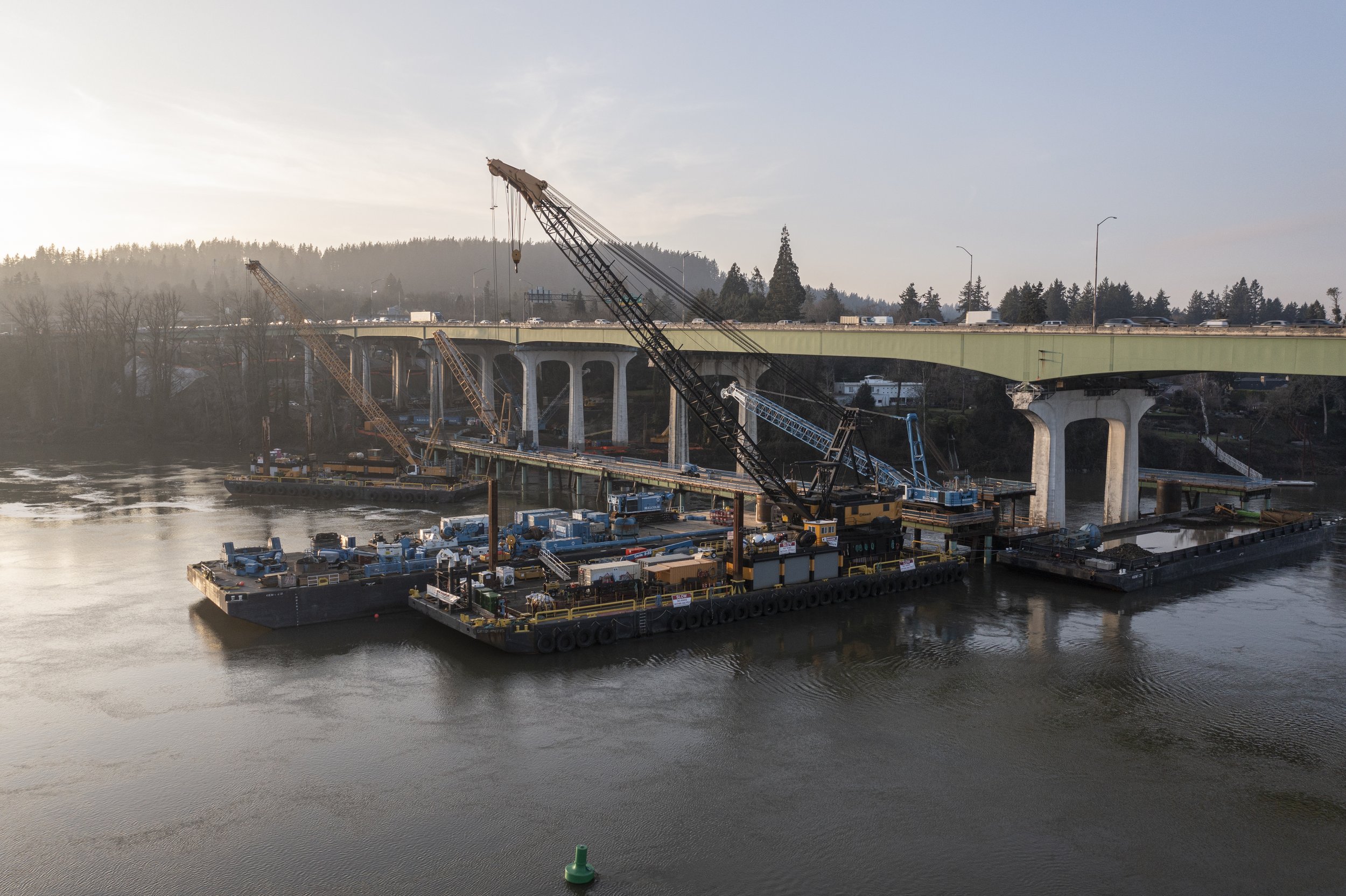Building a Better Abernethy From Below
Two barges, one with a large crane on board, in front of the Abernethy Bridge.
Widening and seismically improving the Abernethy Bridge is a challenging engineering feat for a number of reasons—for example, the nature of certain tasks requires crews to perform work under the Willamette River to reach the bedrock. Not only does the Willamette River serve as a platform for some of the construction work, but it’s also a vital way of transporting materials to and from the worksite. Since construction began last summer, you may have noticed more tugboat and barge traffic on portions of the river. This month we’d like to provide a high-level overview of the work happening on the Willamette and the commercial river traffic associated with the first phase of construction. If you’ve been near the worksite, you may have noticed construction crews have been building temporary work bridges into the river from the shore. These bridges are required to provide a platform for the crews and heavy machines needed to work underneath and beside the bridge. To stabilize these temporary bridges, crews drive vertical supports (“piles”) deep underground with an enormous hammer. When the project is complete, the construction team will dismantle these temporary bridges and reuse some materials on their next project.
Another thing you might have noticed is an increase in commercial traffic on the river. Each week, barges make a couple of round-trip journeys between the job site below the Abernethy Bridge and a material staging yard near the Fremont Bridge in Portland. Cranes load and offload the barges, the largest of which can lift up to 300 tons at a time. The barges carry construction materials, drilling equipment, and excess soil and rocks between the job site and the marine yard.
A variety of barges are used for this work, the largest of which is 250 feet long, 72 feet wide, and 16 feet tall. The maximum carrying capacity of a barge like this one is over 6000 tons. However, because of the relatively shallow river depth, it’s never filled to its maximum capacity. Typically, each barge takes a maximum load of 1200-1500 tons up and down the river at a time. The scale of the Abernethy Bridge project comes into focus when you consider that during the rip rap removal, barges were moving about 5,000 tons up and down the river each week. Various sized barge loads will continue until the first phase of construction is completed in 2025. Combined, the project’s tugboats and barges will move thousands of tons of materials and equipment up and down the river as part of the I-205 Improvements Project.
Without a doubt, there is a lot of activity on the Willamette associated with this project—pile driving, constructing temporary work bridges, and increased commercial traffic—but the river remains open to the public for recreation and fishing. While river users need to exercise extreme caution and boats must travel between the green and red buoys near the work site, this project does not restrict river access. In fact, ODOT’s Allen Hendy talks about how to recreate safely near the Abernethy Bridge on the February 4 episode of Outdoor GPS (at the 2:58 mark)—take a listen.
Please sign up for text messages and email alerts to stay informed of road closures, detours and other impacts, or visit TripCheck. You can also follow ODOT's Facebook, Instagram, and Twitter for updates on the I-205 Improvements Project.


